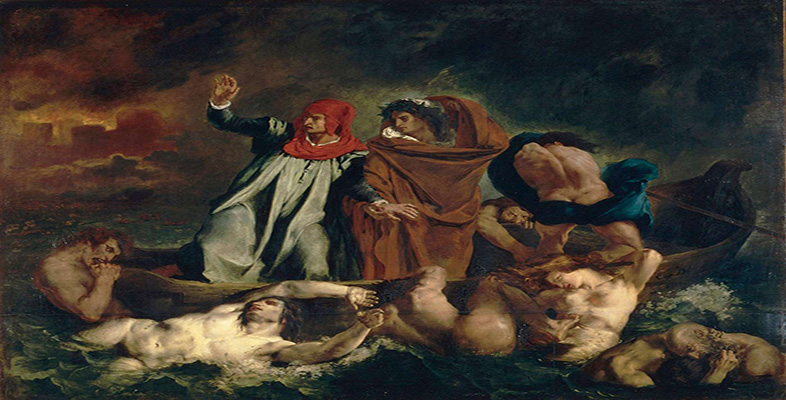3.3 A Baroque influence
Another influence on Delacroix, as we have seen, was Rubens, who represented a particular strain of classicism often referred to as Baroque. This term was first applied to painting by nineteenth-century art historians. It carries overtones of the capricious and the florid, and is used of a style of painting dating roughly from the late Renaissance to the end of the seventeenth century. Rubens had studied and copied ancient Roman statues, friezes and tombs. He made drawings that are as austere in their linear classicism as those of any artist, and he painted the religious and mythological subjects expected of classical art. However, he moved on to paint figures that are more fleshy and realistic than statuesque, and came to prefer dramatic to static compositions. Here is one recent attempt, by newspaper critic Brian Sewell, to sum up the Baroque style. Sewell responds impatiently to what he perceives to be inadequate definitions:
Baroque composition is, in essence, a construction based on logic and perspective, but so swept away by serpentine lines and dramatic diagonals (and so co-ordinated by them), so daring in strenuous movements towards and away from the spectator that the frame and picture plane seem scarcely able to contain them; in extreme Baroque pictures elements swirl and flow as though subject to some cosmic force, contrasts of light and shadow are employed to add both drama and realism, and every constituent is seen to be a support for the core subject, no matter how remote from it.
(Sewell, 2001)
This Baroque energy is evident in Rubens, but it also features, less explicitly, in the work of artists not normally characterised as Baroque. For example, in the Bacchanalian revels painted by Nicolas Poussin in A Bacchanalian Revel before a Term (a ‘term’ in this context is a bust placed on a tapered pillar) and in his Rape of the Sabines (see Plates 17 and 18), diagonal movement, drama and vivid colour are imposed on more conventional classical settings in order to produce an effect very different from that of his Testament of Eudamidas (see Figure 1).
Click to see Figure 1: Nicolas Poussin, The Testament of Eudamidas [Tip: hold Ctrl and click a link to open it in a new tab. (Hide tip)]
Click to see Plate 17: Nicolas Poussin, A Bacchanalian Revel before a Term
Click to see Plate 18: Nicolas Poussin, The Rape of the Sabines
Some of Poussin’s clients required this colourist, dramatic style: his ‘pure’ classicism was susceptible to Baroque adaptation, although you may have noticed the clearly controlled linearity that remains in his Bacchanalian Revel. In these works by Poussin, the movement and the colour are controlled with a balanced and harmonious composition.
